How are you managing the reputation of your company?
If you are struggling to find an answer to this question, you may need to re-evaluate your strategy moving forward.
There are certain aspects of your brand's reputation you have control over, e.g., the way you distribute content through your marketing channels and use website elements to add credibility to your website.
But a news story or a review of your product on a third-party site can be out of your hands.
Your public relations strategy encompasses all these scenarios.
Public relations, or PR, can help expose your business to new audiences.
Simply put, public relations is how businesses communicate with people.
There's a common misconception about PR. Many business owners I work with don't have a PR strategy.
They believe it's only for companies that made a mistake, needing to run PR campaigns to issue apologies or make their businesses look better in the public eye.
While that would fall under the public relations category, that's not the only reason why you would implement a PR strategy.
Your PR efforts will manage how you spread information. It's part of your overall branding strategy, except it focuses more on your reputation and communication as opposed to things like your company slogan and logo.
In a digital era, information gets spread faster than ever. That's why every business needs to have a public relations strategy in 2018.
It doesn't matter how new or old your business is. Even if you're trying to create an effective marketing strategy for your startup company, it's not complete without PR.
I'll explain everything you need to know about the basic concepts of PR and how it can help your brand gain more exposure.
For starters, it's important for you to be able to separate your PR strategy from your marketing strategy.
Don't get me wrong: public relations and marketing are very similar. However, there are differences in the goals of these two departments.
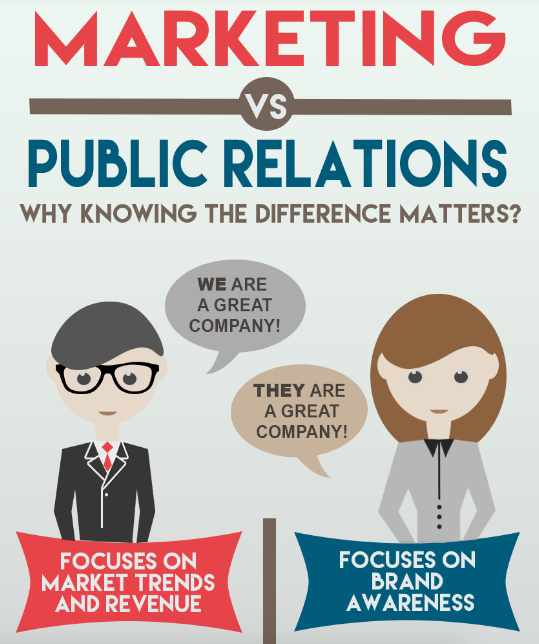
For example, some goals of your marketing campaigns would be to drive more traffic to your website, get new email subscribers, or drive sales.
While you ultimately want your PR strategy to result in revenue, the primary goal of these efforts will differ from that of your marketing strategy efforts.
There isn't necessarily a measurable impact on sales from public relations. It's more of a big-picture strategy.
The goal of your PR efforts would be to improve the reputation of your business. You may already be doing this with things such as:
However, these campaigns would be marketing-oriented.
To improve your reputation through PR, you'll focus on things such as press releases and guest-speaking engagements at industry events. These are indirect strategies to promote your brand.
With a marketing campaign, you'd run a promotion on one of your distribution channels. Do you see the difference?
Ultimately, your PR efforts will still support sales.
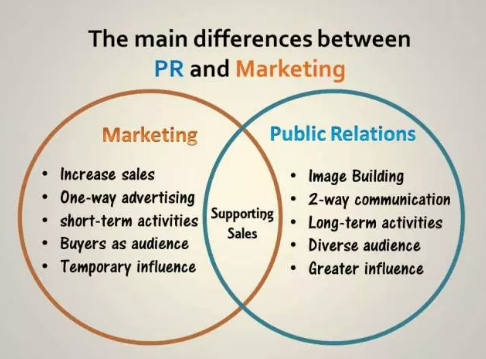
People don't always buy products. They buy brands.
That's why PR is so important.
If a consumer buys your products as a result of one of your marketing campaigns, that person has already established a connection with your brand through your PR efforts.
To keep things simple, public relations can be segmented into three main categories:
All three of these will help establish and build your brand reputation. This will help you get one step closer to achieving your goals.
I'll go into greater detail about each one of these categories to give you a better understanding of how they work.
Owned media is any piece of content your company has control over.
Although we are grouping owned media as a function of PR, it's similar to your marketing strategy.
I'm referring to things such as your blog posts, social media content, and website copy.
For example, if you're learning how to enhance your content by building infographics, this type of media is owned by you.
You control how it gets created. You control when and where it gets distributed.
Owned media will help improve your overall PR strategy. When someone hears about your brand from another source, you want to make sure the content you own is informative and drives them to convert.
To improve the visibility of your marketing campaigns, you may consider using a paid media strategy.
Just as the name implies, this is when you pay someone to display your content.
Social media ads and PPC campaigns both fall into this category.
But for a PR strategy, you may want to consider using social influencers to increase your product credibility.
Influencer marketing has become increasingly popular in 2018.
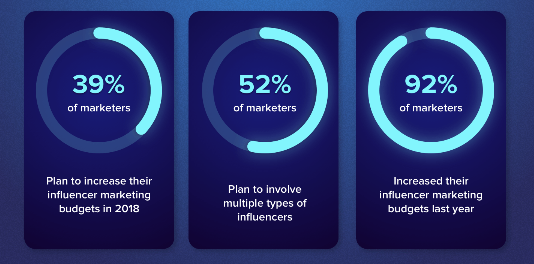
Incorporating a paid media strategy will help expose your business to a more specific group of people who fit within your target market.
This is more effective than content that's distributed to everyone and anyone who just happens to turn on a local news station.
Earned media is out of your control, at least to some extent.
Your actions, behavior, and the quality of your products and services are all within your control. If you can get those things right, your earned media should be positive.
However, you don't have control over what's said about your brand with earned media.
That's the biggest difference between paid media and earned media.
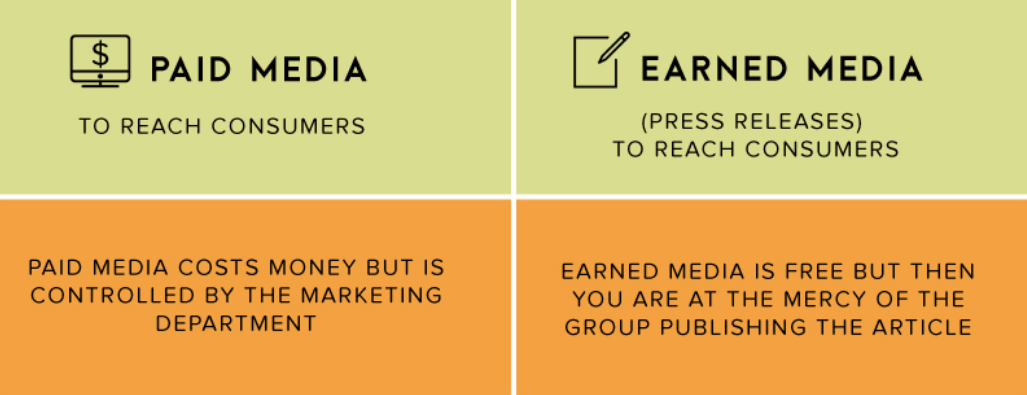
For example, let's say your brand or one of your products is reviewed on a third-party website. That's an example of earned media.
Customers saying positive things about you on social media is earned media as well.
But earned media can also be negative.
Let's say you did something wrong. In this case, you probably won't be bragging on your website about your mistakes. That's not something you'd highlight in your owned media content.
But if a news channel picks up that story and writes an article about your company on its website, it could give people a negative perception of your business.
That said, there's an old saying I'm sure you've heard before:
"There's no such thing as bad publicity."
I can't say I agree with that statement 100%, but don't let one mistake discourage you too much. Your other PR efforts can still improve your reputation and increase your brand exposure.
I'm sure you're familiar with inbound marketing.
This helps you reach customers through campaigns related to SEO, branding, social media, and content marketing.
But what about inbound PR?
You may have heard of it although you may not be very familiar with it. The concept and application of this term are actually quite simple.
With inbound marketing, you're targeting customers. That's not always the case with inbound PR.
Inbound public relations focus on media outlets. Here's a visual aid to explain the inbound PR methodology:

As you can see, strategies targeting consumers and media outlets involve many of the same marketing channels and types of content.
In the past, I've explained how to develop a customer persona that improves conversion rates. You can apply the same concepts to creating a media persona.
Now, you just need to tweak a few things based on whom you're targeting.
For example, let's say you're a local business owner. To help give back to your community, you make a donation to sponsor an event at a nearby high school.
You're doing this to be charitable, but you also want some recognition for your donation.
In addition to sharing this information on your website, you could make the announcement at an event where you know a local news station would be present.
This increases the chances of getting the story picked up, which will give you positive PR.
Instead of focusing on repeat customers, as you would with inbound marketing, you want to focus on repeat publishers. This makes things much easier for you.
These are the media outlets that will continue running positive stories about your business.
As I said earlier, it's tough to see the result of your PR efforts with metrics such as sales.
But you can still use attainable goals to see if your public relations campaigns are working.
One of the first things you should do is track your brand mentions.
A brand mention occurs whenever someone talks about your business. This is a form of earned media.
Just because someone mentions your company doesn't mean they'll provide a link to your site. You do want that if the mention is positive.
Consider using a tool such as Mention to help you keep track of your brand mentions.
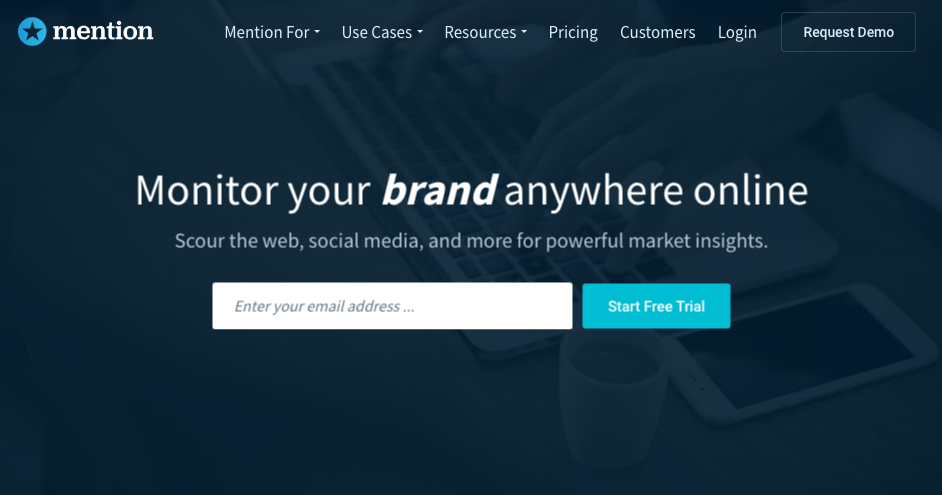
In addition to helping you see what people are saying about your brand, products, or services, Mention can also connect you with potential influencers.
This tool is used by PR agencies, but it also has options for business owners. You can manage your PR efforts in-house instead of outsourcing them.
A mention of your brand may not be a good thing.
You need to take the time to review what people are saying. Sort out the positives, and use this to your advantage.
Reach out to certain websites talking about your brand to help you consistently build backlinks to your website.
With these backlinks, the earned media audience will be able to navigate directly to your site. The combination of more traffic and backlinks will improve your SEO ranking.
You also need to measure your website traffic.
Track new customers.
All these metrics will help you determine whether your PR strategy is working or whether you need to go back to the drawing board.
Whether you're looking to hire someone new or promote an employee from within, you need to know what a PR manager does on a daily basis.
For starters, a good public relations manager needs to have outstanding communication skills. That's because they will be the voice and face of your company at times.
It's common for the PR manager to be the one who speaks at events.
You should also find someone who has great writing skills. This person will write content, e.g., press releases of news related to your company.
It's possible for you to use this person to write blog posts and other website content as well.
Find someone creative. And PR managers need to have strong research skills.
They'll use tools, as I previously discussed, to find out what people are saying about your business. Then they'll leverage that feedback to benefit your company.
The majority of businesses believe it's hard to find new employees with the skills required to build and protect the reputation and credibility of their companies.

Even if your new hire has an MBA, it doesn't necessarily qualify them to do the job of a PR manager.
We know 93% of business leaders say PR is just as important to their companies as every other type of communication method.
Whether you take on these responsibilities, hire someone, or delegate tasks to an employee, these are some of the things a PR manager would be responsible for:
Make sure you find the right person to handle this job. Otherwise, your PR efforts won't be effective.
Learning how to manage your public relations strategy properly can help improve your brand exposure.
While PR and marketing have many similarities, the two departments are not the same. It's important for you to know the differences between these two strategies.
Understand how owned media, paid media, and earned media all have an impact on your brand reputation.
Use inbound PR tactics to target media outlets as opposed to consumers.
Track metrics that relate to your PR goals.
Part of having an effective public relations strategy means putting someone in charge of those efforts. You need to make sure that role is clearly defined in your company.


